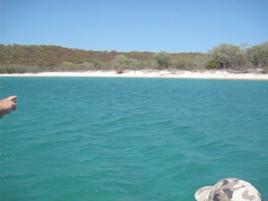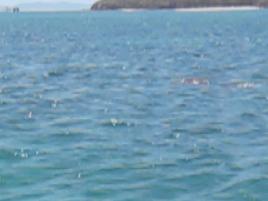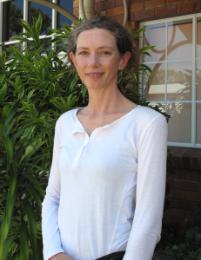Dugongs spotted at Great Keppel Island
Published on 17 December, 2009
Dugongs have finally returned to Putney Beach at Great Keppel Island, according to CQUniversity's Dr Alison Jones...
Dr Jones, along with 3 other researchers, spotted a mother and young calf in the shallow water near the beach and another dugong further out in the bay last week.

Researchers spot the dugong near Putney Beach."We were just finishing some community monitoring as part of the Caring for Our Country Community Coastcare project ‘Head Under Water' when we were fortunate enough to film the 3 dugongs."
Dr Jones, from the University's Centre for Environmental Management, said dugongs were sometimes seen in the shallow bay adjacent to Putney Beach before it became a popular jetski area for the Great Keppel Island Resort.
"Dugongs are quite shy and will usually stay right away from boats and people," said the coral researcher.

Just under the surface, the dugongs feed on seagrass near Putney Beach."The dugongs haven't been seen here for over 2 years since the jetskis became a regular fixture. However since the closure of the Island resort and reduction in boat and jetski traffic they are beginning to return.
"There are seagrass beds in the shallow bay which they are probably feeding on."
Dr Jones said that very little is known of the dugong populations in the Keppels and there is a clear need for surveys to try to determine how many there are and which seagrass beds they frequent.

Dr Alison JonesThis would help to determine how the populations are coping with pressures such as boat traffic and changes in water quality that might affect the seagrasses that they depend on.
"It is very important that people try to stay right away from dugongs if they do spot them. The best way to see them is to stop the boat and just wait till they surface.
"They can be distinguished from dolphins by the lack of a dorsal fin.
"This is the second time that I've spotted a dugong and calf at this particular beach, suggesting that it is an important spot for females with newborn young."

